10 Reasons For Dog Whining After Anesthesia
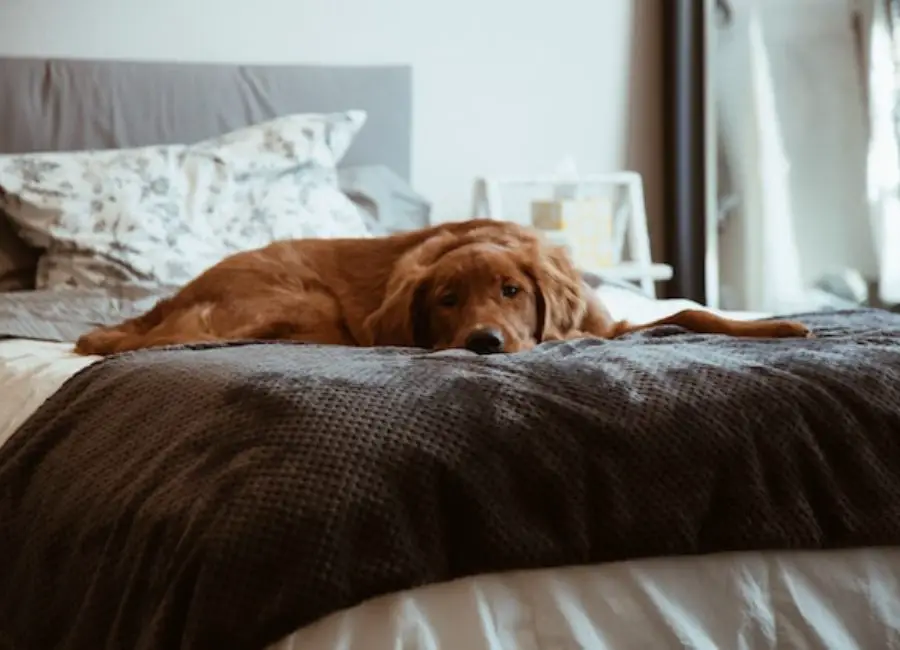
Let’s find out more about a dog whining after anesthesia together…
If you’ve ever had a furry friend undergo anesthesia for a surgery or procedure, you may have noticed that they can exhibit some odd behaviors in the days following.
One of the most common is whining or whimpering, which can be a cause for concern. In this blog post, we’ll explore why dogs whine after anesthesia, and what you can do to help them feel comfortable and happy during their recovery.
So sit, stay, and read on to learn more!
Understanding Anesthesia in Dogs
Before delving into the whining behavior, let’s first understand what anesthesia entails for dogs. Anesthesia is a controlled state of unconsciousness induced by administering specific drugs.
It allows veterinarians to perform surgeries or medical procedures without causing pain or distress to the dog. During anesthesia, the dog’s vital signs are closely monitored to ensure their safety.
Why is my Dog Whining After Anesthesia?
It is common for dogs to whine or vocalize after anesthesia, as they may still be feeling the effects of the medication due to pain, confusion, disorientation, or lingering sedative effects.
Additionally, some dogs may suffer from dysphoria, a state of unease or dissatisfaction, which can cause whining or restlessness.
It is essential to monitor your dog closely after surgery and contact your veterinarian if you have any concerns about their behavior or level of discomfort.
Let’s break it down further for better understanding…
Reasons for Dog Whining After Anesthesia
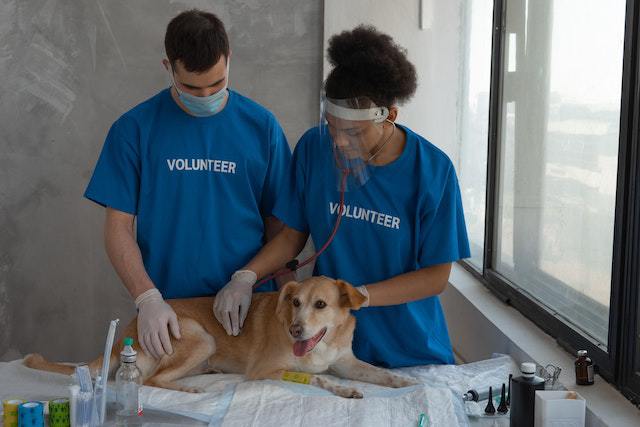
The following are some common reasons for dog whining after anesthesia:
1. Normal Recovery Behavior
It’s essential to remember that some level of whining or vocalization is considered normal during the recovery process.
Dogs may experience disorientation, drowsiness, and mild discomfort, leading to vocal expressions of distress.
2. Side Effects of Anesthesia
Just like humans, dogs can experience side effects after anesthesia. These might include nausea, dizziness, or muscle weakness.
If your dog is whining and exhibiting signs of distress like vomiting or stumbling, contact your vet to discuss these symptoms.
They can provide guidance on whether these side effects are within the normal range and advise on any steps to alleviate them.
3. Anxiety and Stress
Visiting the veterinarian or undergoing surgery can be stressful for dogs, especially if they are not accustomed to such experiences. Whining may be a manifestation of their anxiety and uncertainty.
To create a calming environment at home, choose a quiet room where they can rest without disruptions. Provide their favorite toys, blankets, or clothing items that carry your scent, as these can offer a sense of familiarity and security.
4. Confusion and Drowsiness
The effects of anesthesia can leave dogs feeling groggy and confused as they wake up from their slumber. This state of disorientation can lead to whining, as they try to comprehend their surroundings and what happened.
To help your furry friend transition smoothly, reassure them with gentle strokes and soft, soothing words. Offer familiar toys, blankets, or bedding to provide comfort and a sense of security. Avoid overwhelming them with attention or inviting guests during this time to minimize stress.
5. Pain and Discomfort
After undergoing a surgical procedure, it’s natural for dogs to experience pain and discomfort as they recover. Just like humans, dogs can’t directly communicate their discomfort, and whining becomes their way of expressing distress.
To alleviate this, your veterinarian will likely prescribe pain medication suitable for your dog’s condition and size. Administer the medication as instructed and closely monitor your pet’s behavior.
Keep them in a quiet and cozy area, away from excessive noise and activity, to provide a peaceful environment for healing.
6. Lingering Effects of Anesthesia
In some cases, the effects of anesthesia may take longer to wear off completely, causing prolonged whining even after the initial recovery period. This is more common in older dogs or those with certain health conditions.
Continue providing patient and loving care, keeping them comfortable and supported during this time. If the whining persists or if you have any concerns, consult your veterinarian for further evaluation.
7. Itchiness and Irritation
Following surgery, stitches or wound dressings may cause itchiness and irritation for your dog, leading to increased whining. If you notice them frequently licking or scratching the affected area, it’s crucial to prevent this behavior to avoid infection.
Your veterinarian may recommend using an Elizabethan collar (the infamous “cone of shame”) to prevent access to the wound or suggest dog-safe topical creams or ointments to soothe the irritation.
8. Post-Operative Medications
Certain medications prescribed after surgery can have side effects that contribute to whining. For example, some pain medications can cause drowsiness or restlessness.
Always follow your vet’s instructions for administering medications, and take note of any changes in your dog’s behavior.
If you’re concerned about the side effects of a particular medication, discuss it with your veterinarian to see if adjustments can be made.
9. Attention-seeking Behavior
Whining can also be a way for dogs to seek attention and comfort during their recovery period. While it’s natural to want to shower them with affection, avoid reinforcing excessive whining with treats or constant attention.
Instead, offer praise and cuddles when they are calm and settled. Use positive reinforcement to encourage good behavior and gradually wean them off attention-seeking behaviors.
10. Sleep Disruption
Anesthesia can disrupt your dog’s normal sleep patterns, leaving them feeling restless and disoriented. Encourage your dog to rest, but avoid forcing them to sleep.
Ensure they have a comfortable and quiet space to relax, but also allow them to move around if they need to find a more comfortable position. Be patient, as their sleep patterns should gradually return to normal as they recover.
Learn more about dog whining while sleeping.
Comforting a Dog Whining After Anesthesia
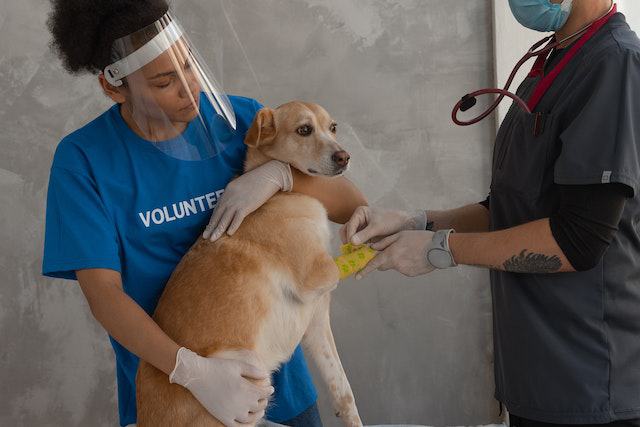
If your dog is whining after anesthesia, it can be a sign of discomfort or pain. Here are some tips to help comfort your furry friend:
- Keep your dog comfortable: Make sure your dog has a comfortable place to rest, with soft bedding and blankets.
- Offer gentle affection: Providing gentle affection and reassurance can go a long way in comforting your dog. Physical contact, like petting, can help them feel secure and loved.
- Provide food and water: Your dog may feel nauseous after anesthesia, so offer small amounts of food and water throughout the day.
- Monitor your dog: Keep a close eye on your dog’s behavior and contact your veterinarian immediately if you notice any concerning symptoms.
- Use pain medication: Your veterinarian may prescribe pain medication for your dog. Make sure to follow the dosage instructions carefully.
- Restrict activity: Your dog may need to rest and avoid activities that could put a strain on their body.
- Provide company: Your dog may feel anxious or uncomfortable after anesthesia, so provide company and reassuring words to help calm them down.
- Keep the environment quiet: Loud noises or sudden movements can startle your dog, so keep the environment quiet and calm.
- Groom your dog: Gently groom your dog to keep them clean and comfortable.
- Be patient: Your dog may take time to fully recover from anesthesia. Be patient, provide comfort and care, and follow your veterinarian’s advice for a speedy recovery.
Signs of Complications in Dogs After Anesthesia
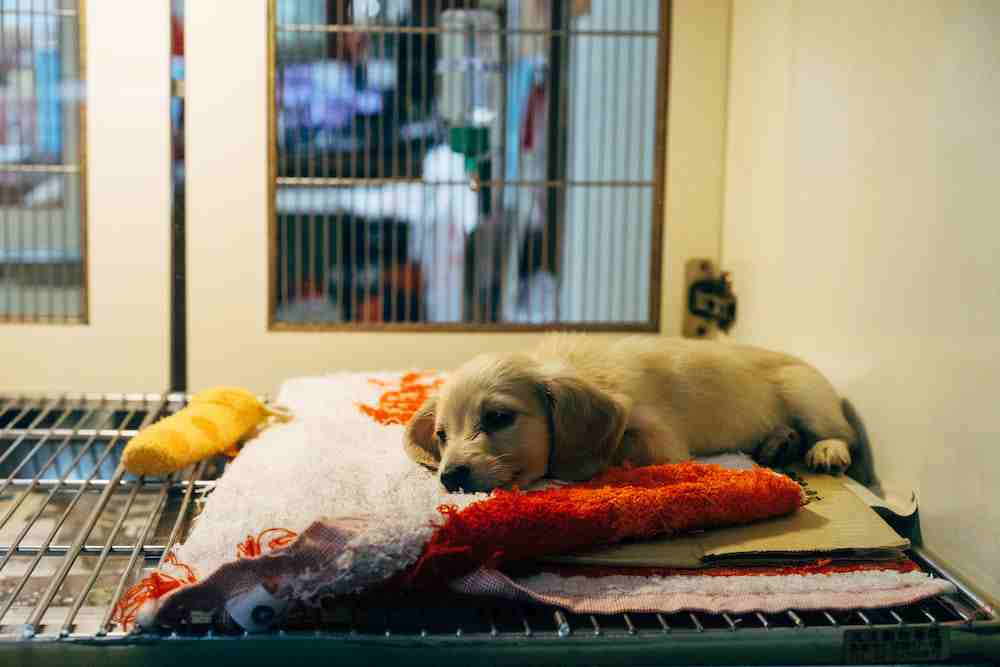
Here are some common signs of complications in dogs after anesthesia:
1. Delayed recovery: Sometimes, dogs may take longer to wake up after anesthesia, which may indicate an underlying issue.
2. Respiratory problems: Dogs may face difficulties in breathing or might have abnormal breathing patterns, leading to oxygen deprivation. This may be due to airway obstruction, edema, or other underlying issues.
3. Hypothermia: Dogs may experience low body temperature due to the administration of anesthesia. This may occur due to the loss of body heat during the surgical procedure or faulty equipment.
4. Vomiting: It is common for dogs to experience nausea and vomiting after undergoing surgical procedures with general anesthesia.
5. Pain and discomfort: Post-operative pain and discomfort are common in dogs. However, if it persists for an extended period, it could be due to an underlying complication.
6. Behavioral changes: Dogs may show unusual behavior, such as disorientation, depression, or aggression.
7. Excessive Whining: If your dog’s whining becomes persistent and intense, it could be a sign of underlying issues.
8. Lethargy: Unusual lethargy or weakness may indicate a problem in the recovery process.
9. Loss of Appetite: If your dog is refusing to eat or drink, it’s essential to address this issue promptly.
If you notice any of these signs or symptoms in your dog after anesthesia, it is crucial to contact your veterinarian immediately. Early identification and timely intervention can prevent further complications and promote faster recovery.
Learn more about dog whining.
Minimizing Dog Whining After Anesthesia
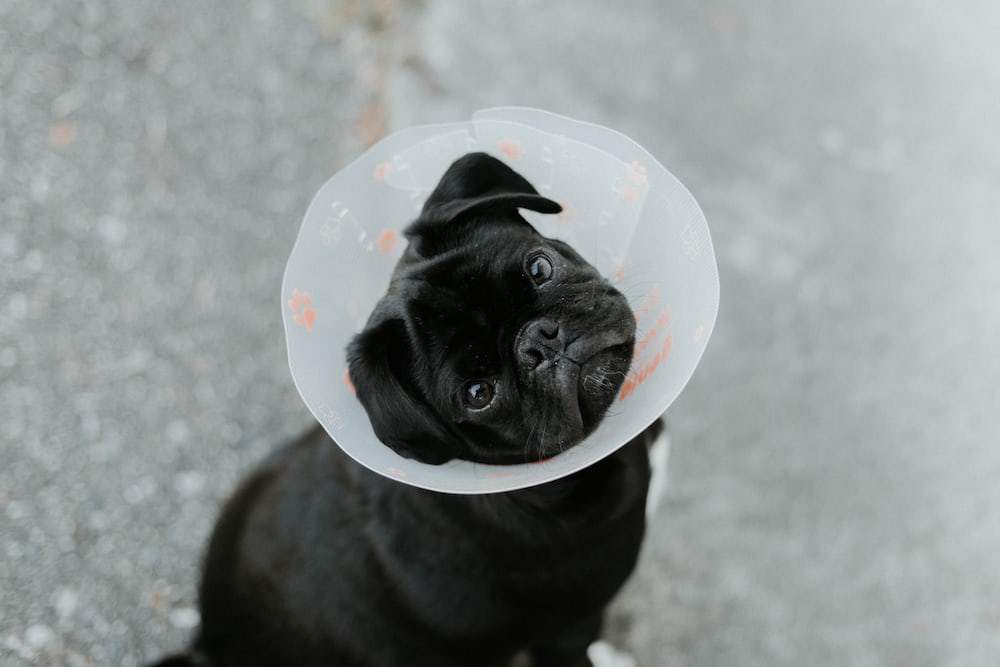
Here are some steps to minimize your dog’s whining after anesthesia:
1. Provide Pain Management
One of the common reasons why dogs whine after anesthesia is pain. Providing appropriate pain management can prevent or minimize whining. Your veterinarian will prescribe pain medication suitable for your dog’s condition, weight, and age. Follow the dosage and frequency as instructed to ensure that your dog’s pain is well-managed.
2. Keep Your Dog Comfortable
Anesthesia can cause confusion, disorientation, and anxiety in dogs. Keeping your dog in a comfortable and quiet area can help them relax. Provide soft and warm bedding to keep your dog cozy and comfortable. You may also use an e-collar to prevent your dog from licking or biting the surgery site, which may cause more pain or infection.
3. Follow Post-Op Instructions
Your veterinarian may provide you with specific post-operative instructions that you need to follow for your dog’s recovery. Follow the instructions carefully to prevent any complications or setbacks during the healing process. If you have any concerns or questions, don’t hesitate to ask your veterinarian or seek professional help.
Related Questions
Why do dogs whine after anesthesia?
Dogs may whine after anesthesia because they are disoriented, confused, and in pain. Anesthesia can be a traumatic experience for dogs, and they may not fully understand what is happening to them. Whining can also be a sign of discomfort or pain in certain areas of the body.
How long does whining after anesthesia normally last?
Whining after anesthesia can last anywhere from a few hours to a few days, depending on the severity of the anesthesia and the individual dog’s reaction. It’s important to be patient and allow your dog to recover fully before expecting them to behave normally again.
Is whining after anesthesia a cause for concern?
While some level of whining after anesthesia is normal, excessive whining or whining that persists for several days may be a cause for concern. If your dog is in obvious distress or shows signs of pain or discomfort, contact your veterinarian immediately.
How can I comfort my dog after anesthesia?
Comforting your dog after anesthesia can be as simple as providing a warm, cozy spot to rest and lots of soothing attention. Be sure to follow your veterinarian’s instructions regarding post-operative care, including administering any medication as directed.
Can whining after anesthesia be prevented?
There may not be a way to completely prevent whining after anesthesia, but taking steps to keep your dog calm, comfortable, and stress-free before and after the procedure can help minimize any distress they may experience.
Is it safe to leave my dog alone after anesthesia?
It’s generally not recommended to leave your dog alone after anesthesia, especially in the immediate aftermath of the procedure, when they may still be groggy or disoriented. Plan to have someone stay with your dog during the initial recovery period to ensure their safety and well-being.
Learn more about identifying a sick dog.
Conclusion
So there you have it, folks! While it can be alarming to hear your furry friend whine after anesthesia, it’s important to remember that this is a common side effect and typically nothing to worry about.
With a little love and patience, your pup will be back to their playful self in no time. Don’t hesitate to reach out to your veterinarian if you have any concerns, and until then, happy healing to your pup!
